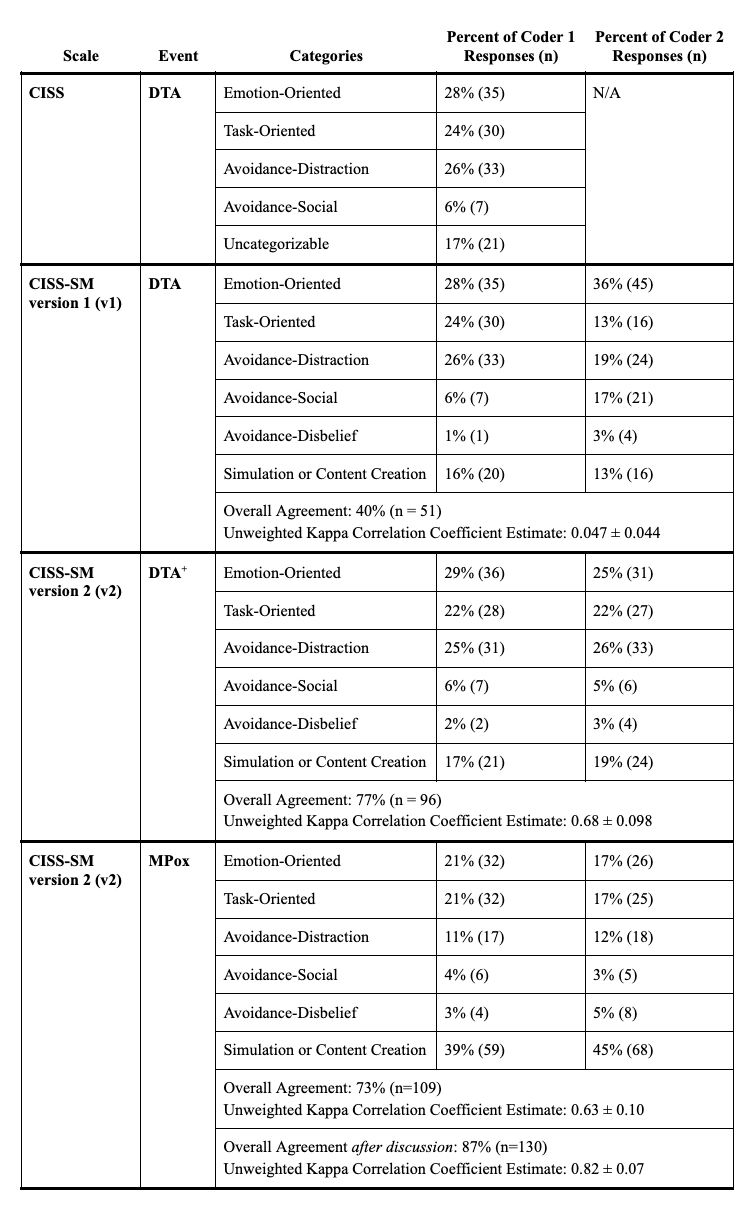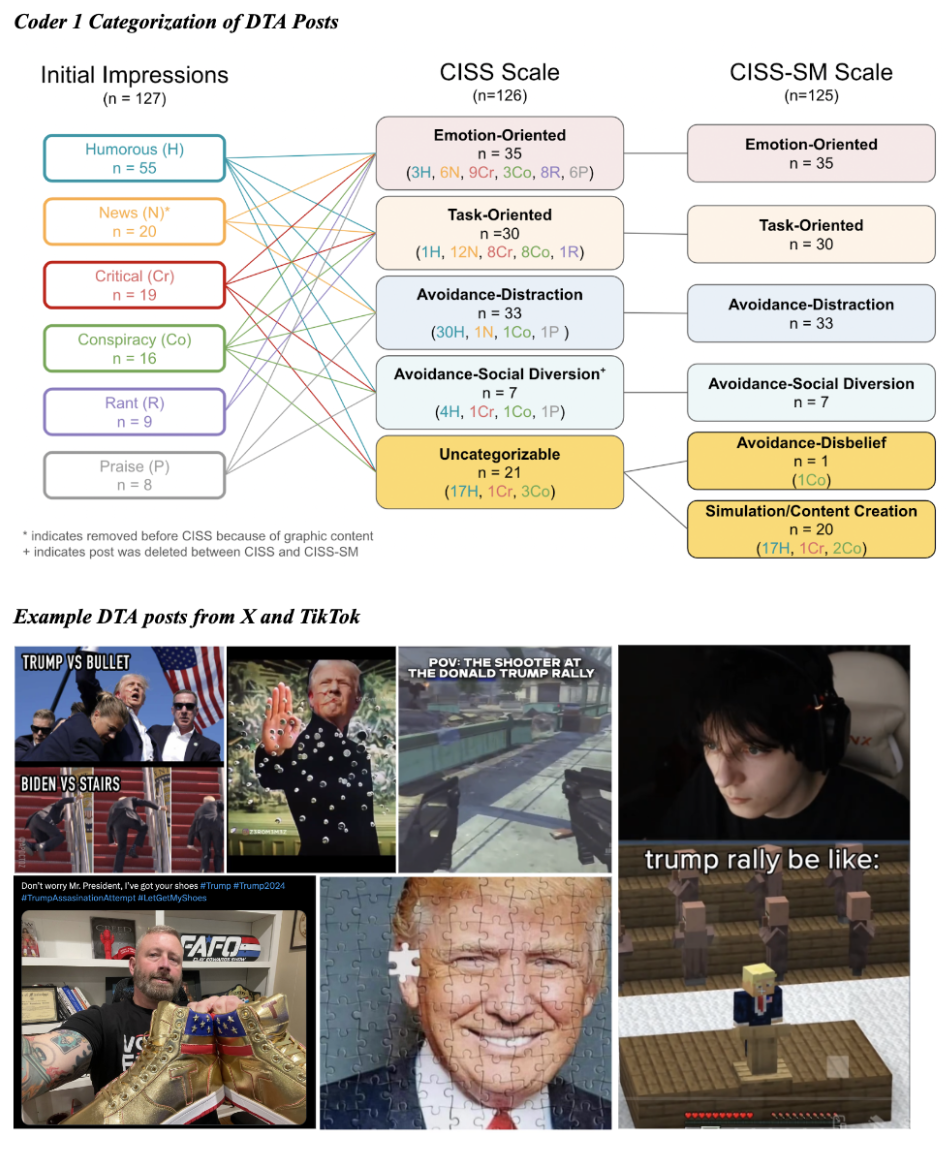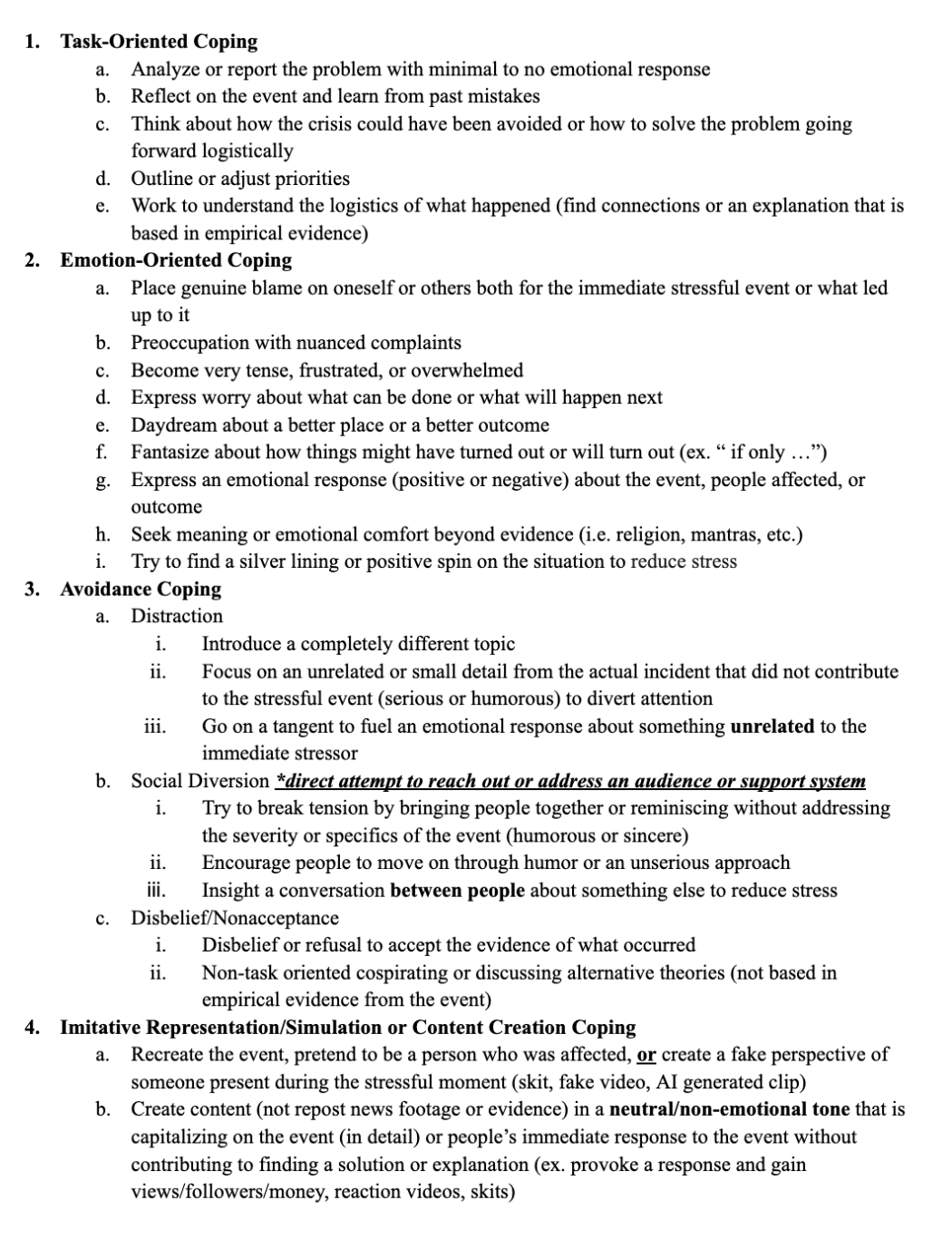Mental Health 2
Session: Mental Health 2
764 - Adapting Coping Scales for the Digital Age: A Pilot Study of Social Media Crisis Response to Global Events
Saturday, April 26, 2025
2:30pm - 4:45pm HST
Publication Number: 764.3630
Mary Lowance, Donald and Barbara Zucker School of Medicine at Hofstra/Northwell, Bayside, NY, United States; Grace Liberatore, Donald and Barbara Zucker School of Medicine at Hofstra/Northwell, Pelham, NY, United States; Julian Franco, Donald and Barbara Zucker School of Medicine at Hofstra/Northwell, West Babylon, NY, United States; Mia Graybow, Donald and Barbara Zucker School of Medicine at Hofstra/Northwell, Bayside, NY, United States; Jack Brenner, Zucker School of Medicine, Great Neck/NY, NY, United States; Alyssa Kim, Donald and Barbara Zucker School of Medicine at Hofstra/Northwell, New Hyde Park, NY, United States; Saia Kalash, Cohen Children's Medical Center, Great Neck, NY, United States; Ruth Milanaik, Cohen Children's Medical Center, Great Neck, NY, United States

Mary Lowance, BS (she/her/hers)
Gap Year Research Intern - Student Trainee
Donald and Barbara Zucker School of Medicine at Hofstra/Northwell
Bayside, New York, United States
Presenting Author(s)
Background: Coping strategies (CS) are actions/thoughts used to manage stress. Social media (SM) reshapes youth response to crises as events are rapidly discussed online. 95% of US teens use SM, allowing for self-expression and emotional sharing. Adolescents are disproportionately more vulnerable to adopting maladaptive CS under stress. SM’s unique visual impact may not be represented in established coping inventories leaving a gap in understanding youth mental processing.
Objective: This study examines use of modified coping scales to explore CS in the age of SM.
Design/Methods: Endler & Parker’s “Coping Inventory for Stressful Situations” scale (CISS) was used to assess TikTok and X responses to stressful events: Donald Trump Assassination Attempt (DTA) and Congo’s Monkeypox (MP) outbreak. After analysis (Figure 1), posts were categorized with CISS (Table 1). Uncategorizable posts (21/126) were thematically analyzed into new categories (Avoidance-Disbelief & Simulation/Content Creation), leading to a revised scale: CISS-Social Media (CISS-SM; Figure 2). Independent sets of coders assessed posts using CISS-SM. Cohen’s Kappa tests (CKT) were conducted in R to assess inter-rater agreement/reliability. Unweighted kappa correlation coefficient estimates (UKCCE) were interpreted in accordance with literature.
Results: 276 posts (>900 million views) were analyzed. Coders initially agreed on 40% categorization of DTA posts using CISS-SM (Table 1). CKT yielded UKCCE of 0.05 (poor/slight agreement). After clarification among coders, posts were reassessed using CISS-SM version 2 (v2) and agreement rose to 77%. CKT yielded UKCCE of 0.68 (moderate/substantial agreement). Initial coder agreement using CISS-SMv2 for MP posts was 73% with CKT yielding UKCCE of 0.63 (moderate/substantial agreement). After discussion, agreement rose to 87% with CKT yielding UKCCE of 0.82 (substantial agreement).
Conclusion(s): Traditional CISS inaccurately reflected CS on SM, but revised CISS-SM captures a wider range of CS. As SM expands, adaptations to CISS need to encompass novel means of coping, as identified in 19-22% of DTA posts and 42-50% of MP posts. Avoidance behavior or simulations of events may encourage detachment, reduce empathy and desensitize youth to trauma. This may offer temporary relief, but could be harmful long-term or lead to misinformation, poor mental health and distorted collective memory. Given record-high child SM use, adults must be vigilant for maladaptive CS. Further standardization of CISS-SMv2 and research is needed to understand how these new behaviors influence individual and collective resilience in the digital age.
Table 1. CISS and CISS-SM Categorization and Agreement
 A total of 126 DTA posts and 150 MPox posts were categorized. When analyzing DTA posts with CISS-SMv2, one post was no longer available to view. Thus, 126 DTA posts were analyzed with CISS-SMv1 compared to 125 DTA posts analyzed with CISS-SM v2, as indicated by “+”.
A total of 126 DTA posts and 150 MPox posts were categorized. When analyzing DTA posts with CISS-SMv2, one post was no longer available to view. Thus, 126 DTA posts were analyzed with CISS-SMv1 compared to 125 DTA posts analyzed with CISS-SM v2, as indicated by “+”.Figure 1. Example Methodology and Thematic Analysis of DTA Posts

Figure 2. Coping Inventory for Stressful Situations - Social Media Response (CISS-SM v2)

Table 1. CISS and CISS-SM Categorization and Agreement
 A total of 126 DTA posts and 150 MPox posts were categorized. When analyzing DTA posts with CISS-SMv2, one post was no longer available to view. Thus, 126 DTA posts were analyzed with CISS-SMv1 compared to 125 DTA posts analyzed with CISS-SM v2, as indicated by “+”.
A total of 126 DTA posts and 150 MPox posts were categorized. When analyzing DTA posts with CISS-SMv2, one post was no longer available to view. Thus, 126 DTA posts were analyzed with CISS-SMv1 compared to 125 DTA posts analyzed with CISS-SM v2, as indicated by “+”.Figure 1. Example Methodology and Thematic Analysis of DTA Posts

Figure 2. Coping Inventory for Stressful Situations - Social Media Response (CISS-SM v2)


